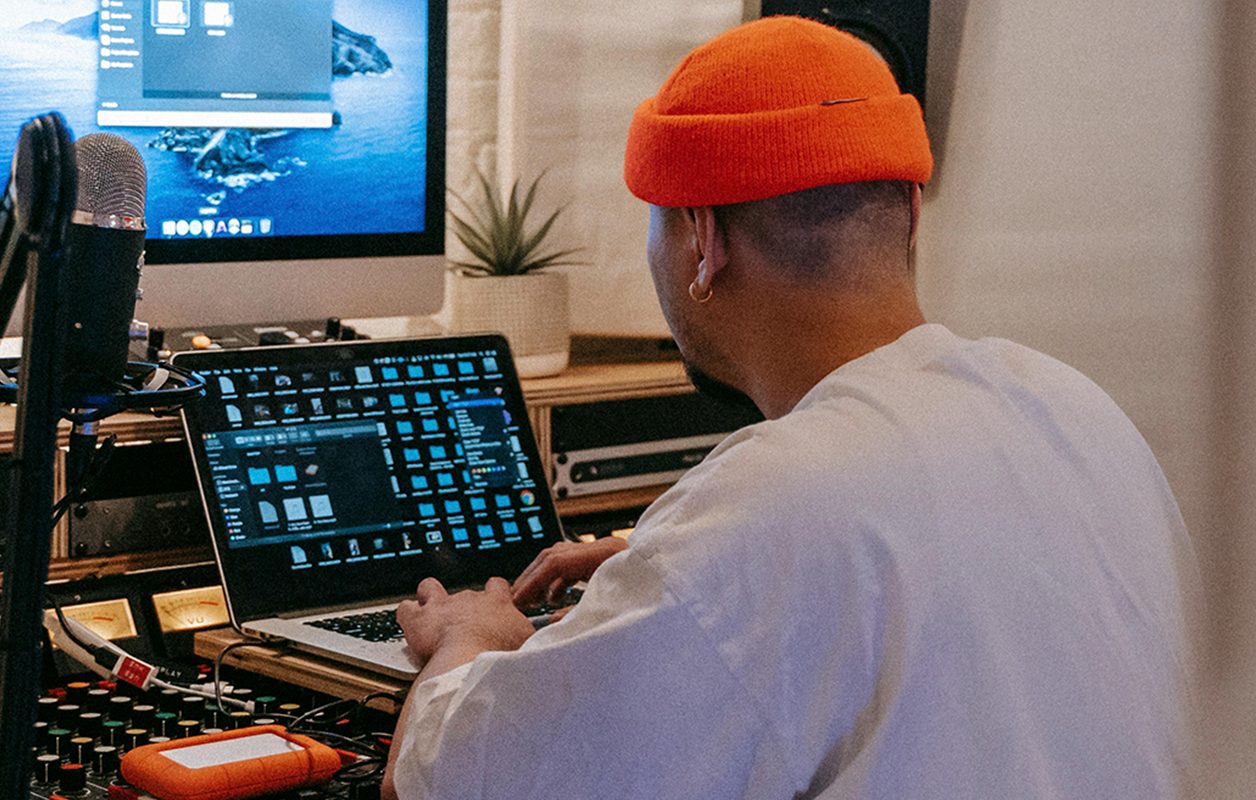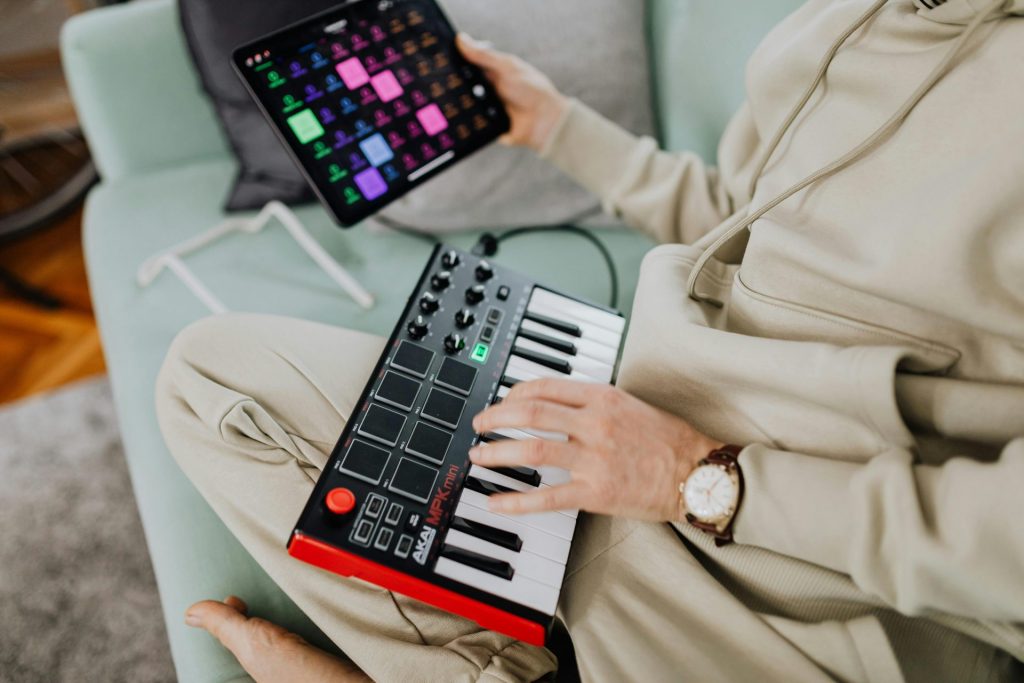
At BPM Create, we’re proud to offer our subscribers thousands of sound packs, MIDI files, and synth presets to help inspire your latest beats. But as any musician knows, it’s not just a matter of having the right sounds to make great music; it’s what you choose to do with them.
As sound curators, cultivators, and enthusiasts, we know our way around sample manipulation. Below, we’ll demonstrate eight innovative sampling techniques so that you can reignite your music production process.

8 Essential Sampling Strategies for Building Better Beats
Create ear-catching beats with these essential sampling techniques:
1. Splicing to the Beat
If you don’t know where to begin with your sample placement, start by turning on the grid of your DAW. Place your samples on strong beats to start (like 1, 2, 3, 4) and then experiment with harping on the in-between eighth or sixteenth notes.
You can see how I use a vocal chop on the various eighth notes of this beat to serve as an introductory rhythmic element into the song.
2. Playing with Transients
Playing with the transients, compression, or overall gate of samples is a great way to create some groove in your mix. You can use sidechain compression or a gate to bring your sample in and out to the beat. In this example, I created a similar effect by using the Kickstart plugin by Cable Guys to help the string sample pulse in and out in the chorus:
3. Reverse Sampling
A simple reverse can quickly shift the texture profile of a sound. Experiment with reversing samples, especially at points of transition, whether that’s at the end of an 8-bar phrase or moving into the high-energy chorus section.
To create this melody, I took the same vocal sample and spliced it to the beat, with the purple clips denoting the reversed sections:
4. Time Stretching
Speeding up or slowing down your samples can be a highly effective sampling strategy, especially in the age of “sped up” and “slowed and reverb” remixes. Take a sample or royalty-free song and experiment with speed changes. Note that depending on your sampling mode, this may change the original key of the sample.
In my case, I slowed down one of my songs called “ALL THE VOICES IN MY HEAD” (labeled Slowed Sample accordingly) and used it in a new sonic context:
5. Looping
Looping a sample for a portion or the full duration of a track can serve as an excellent foundation for other elements in your beat. For instance, in this song, the looped group of the altered string sample created the main melody and driving force behind the momentum of this chorus section:
6. Organic Field Recordings
Nothing quite breathes life into your tracks like field recordings or organic sounds. If you find yourself uninspired by your sample packs, take to a new environment to record your own. Recording sounds in your immediate environment can be a fun, creative constraint that leads to unexpected results. Check out this video on Instagram and listen to a beat created by sampling our nearby park. You can also download an entire pack of these sounds on BPM Create.
7. Pitch Shifting
Pitch shifting your samples is a great way to build a melody out of vocal chops or help your samples gel more with the mix. You can use your DAW’s stock tuner to help you identify the current key of your sample and track and adjust using basic pitch shifting, or specialized plugins like Soundtoys’ Little Alterboy.
In this example, I shifted the pitch of a string sample to create a unique melody in the bridge of a song:
8. Resampling
Sometimes, one sampling layer isn’t enough. You can process your samples through several chains of effects to create unique textures and sounds. One thing to note is that this process can become pretty CPU-intensive, so you may find that after several layers, it’s a good idea to bounce out the processed audio, before running it through the next line of processing. You can also “Freeze” the track depending on your DAW.
I used this technique with a simple synth note to create a dreamy, digital texture. I first ran the synthesizer through Glitchmachine’s Fracture, before using an EQ and reverb to smooth out the rough edges creating the following:
Can I Sample My Favorite Songs?
While it can be tempting to sample your favorite tracks, you must reach an agreement with the copyright owners to legally clear a sample. Even if you use just a few seconds of your favorite tracks in a song, you still need to clear your samples.
As an alternative, you can use BPM Create’s sample library to source royalty-free samples and sound packs you can use in your beats with no strings attached. Our robust search features make it easy to find similar-sounding samples by sorting by mood, key, BPM, and more.
BPM Create’s library has over a million samples, stems, MIDI files, vocals, drum beats, and sound effects so that you can get back to building inventive beats. Have fun getting creative in the studio with these sampling strategies!

